Streets Ahead: Interview with Frederique Bellec
This week, the Women’s Mobile Street Photography Collective (Streets Ahead) is pleased and honored to feature Frederique Bellec in our interview section.
Many of you know Frederique on Instagram and EyeEm as “eyephonographer.” However, I first learned about Frederique on Backspaces… and I’m not lying when I say that her photography immediately caught my full attention. She has a wonderful intuition and eye for mood and composition. So after reading this interview, I highly recommend that you take a few minutes to visit Frederique’s website and Social Media platform galleries for a true visual treat.
Frederique Bellec Photography
EyeEm
Instagram
Backspaces
Oggl
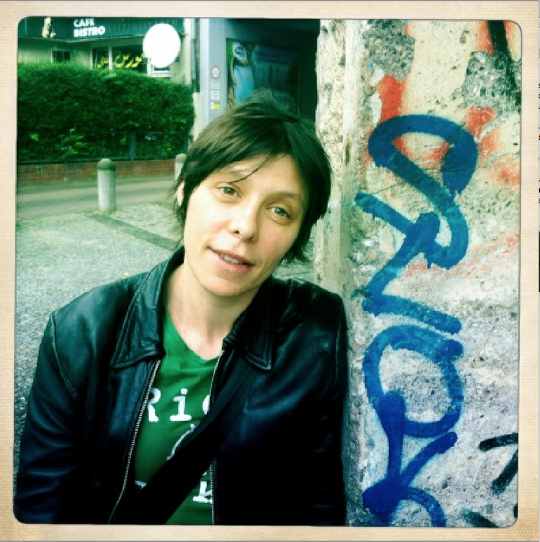
© Frederique Bellec
Please share a little bit about yourself…
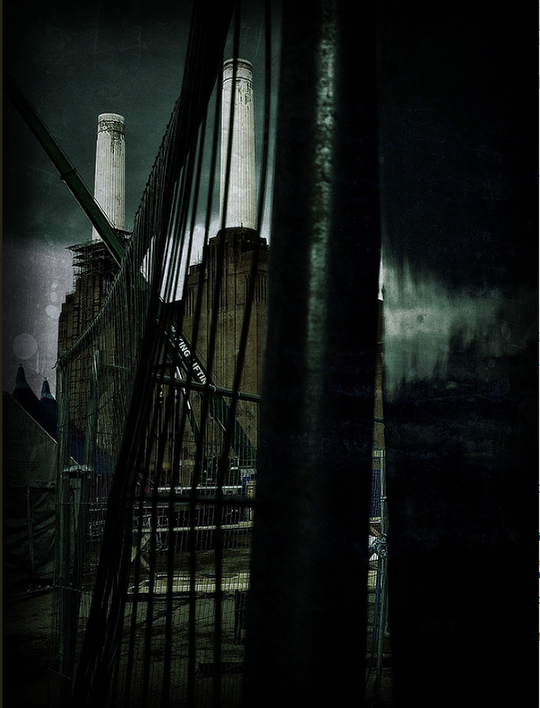
© Frederique Bellec, “Battersea Power Station”
Can you tell us a little about yourself? Where are you from? Have you always been interested in photography? Are you (or have you been) involved in any other art medium… such as painting, sculpture, writing, or music?
I grew up in a small Breton village in France surrounded by big fields and farms. But at heart, I am a big city dweller and have been living in London for the past 15 years, the city which I call my home. I feel more at home in an urban environment and this heavily influences my photography.
My interest in photography started when I was a child with my father who was a keen amateur photographer. I remember his Rolleiflex and his Canon and watching him work in our bathroom-turned-darkroom. It’s not until very recently however that I have reignited my interest in photography and unlocked my creativity thanks to the iPhone and the iPad – I currently shoot on an iPhone 5 and edit on iPhone and/or iPad 2.
I am also a keen music lover and enjoy shooting live acts (with my DSLR) and London is great for that!
How did it all start?
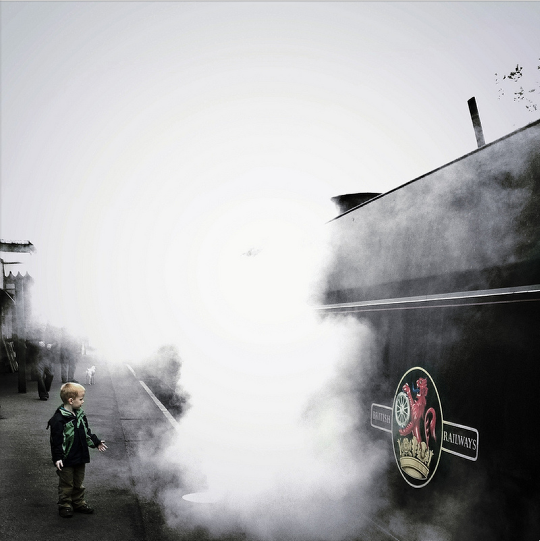
© Frederique Bellec, “Child and Train”
(Catching a moment of childhood innocence and awe.)
How did you get involved in mobile street photography? And is this a genre that you predominantly focus on in your work?
I discovered mobile photography and its community thanks to Richard Gray’s iphoneography course in March 2012. Part of the course assignments involved taking candid street photos (ninja shots as Richard called them). This was something I had never done before and felt a bit shy about. Using the iPhone made it easier than I thought it would be to capture moments of street life in London. London is a fantastic subject where you are bound to come across something unusual or interesting that will make you want to stop and snap. I found that all I had to do was open my eyes and tap! Mobile devices lend themselves well to this kind of photography as it is quick, silent and discreet in a city where everyone (nearly everyone) has their eyes fixed on their mobile screen!
I have dabbled in landscape and nature photography but I always go back to urban street photography. I prefer the concrete and metal look, straight strong lines and perspectives and city people, to green countryside, trees and fields which I find difficult to photograph in an interesting way.
Music photography is my other interest and something I want to grow, but this is more of a big camera thing!
Street Photography Ethics…
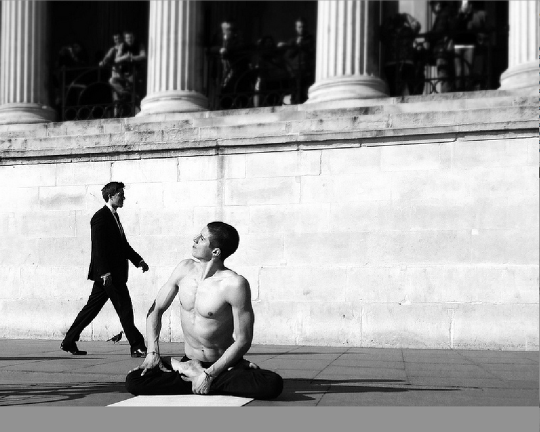
© Frederique Bellec, “Contortionist”
(This was taken in Trafalgar Square on a sunny lunch break. I was drawn to the contrast between the stillness and peacefulness of the performer and the hustle and bustle of people hurrying past. I made a series of this moment on Backspaces.)
There is a general question among some people about the morals and ethics of taking pictures of strangers in a public environment. Many think that this is an infringement of an individual’s rights and privacy. What are your thoughts on this? Has the question about “privacy” been an issue for you in your work? Have you had any negative experiences taking street photographs in your home country or whilst traveling abroad? How did you handle them?
I see my work as a means to tell everyday city life stories and it often involves taking photos of people I don’t know. So far, I have never had any problems or negative experiences. I am quite petite and unassuming which generally makes me inconspicuous – a great advantage for street photography. I think ethics in street photography is all about the context. I usually refrain from publishing photos with children or people in distress or in a desperate position, but sometimes the story is too strong not to publish. I see my work as story telling. I want to take the image that has a story to tell and the people in the photo are the characters of the story I want to tell. I like to look for the quirky side of things, a look, an expression or movement that implies humour, often found in shadows or backgrounds or strange juxtaposition of people and their environment. Often people in the frame who have nothing to do with each other can appear to know each other if the right moment is captured and the perspective changes from reality. This is why I think street photography is different from photojournalism (even though both genres can overlap), in the sense that street photography does not have to portray reality. Change the angle, wait for the right moment for a gesture or movement, and a new story begins.
Women’s perspective in street photography…
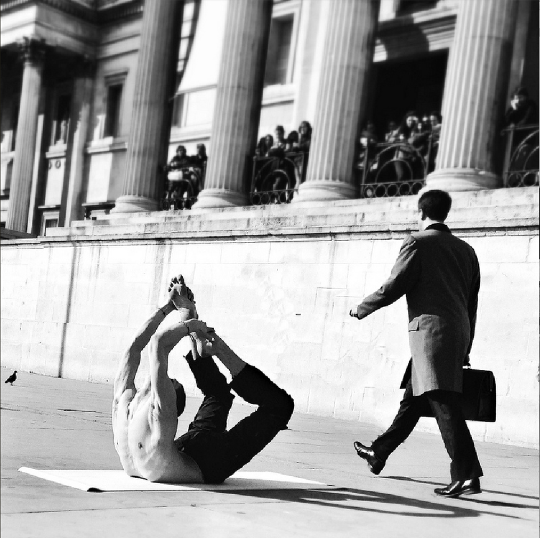
© Frederique Bellec, “Contortionist 2”
Do you think that women bring to photography, especially street photography, a certain perspective that is not necessarily shared by many male photographers? If so, can you elaborate on your thoughts?
I have never really thought of photography as gender-sensitive. But a photographer brings his or her own sensitivity to their work, as well as his or her own background, life experience, photography experience, and all of this can be affected by gender. A woman’s life experience is likely to differ from a man’s life experience to varying degrees, depending on where they live in the world, how old they are, what their situation is, etc. And this will translate into their photography, into what they will see and get drawn to. The rapport between a photographer and her subject (environment, streets, people, etc) can be different as well. People might feel less threatened by a woman photographer. Having said that, I am not sure it is possible to say whether the photographer is a man or a woman just by looking at their body of work. Again, everyone is different, everyone sees differently, and everyone works differently. That’s what makes street photography so interesting.
As I am relatively new to photography and street photography in particular, I seek inspiration from a variety of photographers, male and female. Of course, I love the work of Vivian Maier, I find her photography very powerful, sometimes overwhelming. I was moved nearly to tears the other day when I opened a book of her photographs in a bookshop. The image was so strong and so vivid. I also really like Markéta Luskačová. Her work has a certain darkness and agelessness that really draws you in. I particularly like her Spitalfield Market series. In a completely differently style, I find the work of Polly Braden very interesting. Her ongoing project about the London Square Mile is fascinating. It is like she managed to freeze this buzzing and busy part of London into little moments of calm and reflection and make the financial district of London appear more human.
Another two great sources of inspiration and aspiration for me are Andre Kertesz and Matt Stuart. Kertesz for the perfection of the composition in each of his images – nothing is superfluous, everything is at the right place. Matt Stuart for the wittiness and quirkiness of his images – and for his subject: London.
One thing that has changed for women I think is the ease of access to photography now. Mobile and advances in camera technology has made it more affordable and technically more accessible for everyone and women in particular I think. The technical and financial obstacles have been removed and it’s now easier than ever to start snapping in the street with your mobile device. I am not saying that technology makes a good photographer of everyone, but makes it easier for someone with talent and an good eye to find their creative outlet and explore it.
Post-processing Images…
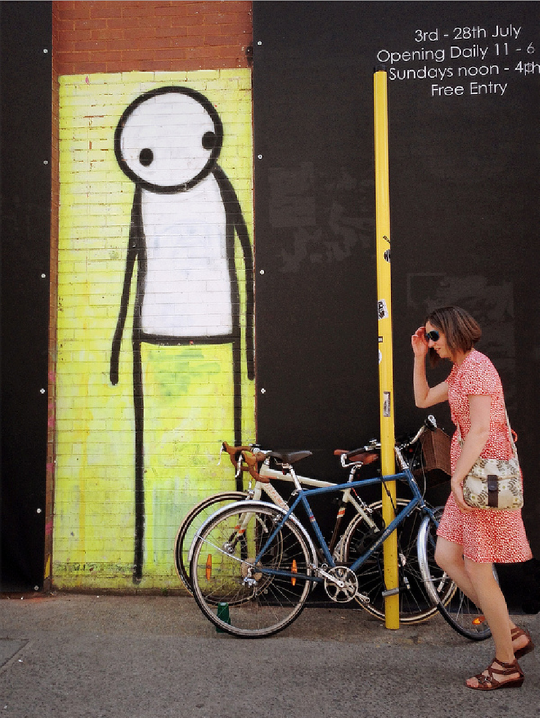
© Frederique Bellec, “Graffiti”
(Photographing the quirky side of things, making a connection between people and their environment.)
What are your thoughts on post-processing mobile street images? Do you post process your own images? Can you share with us an example of your workflow process?
When I first started mobile photography, I was interested in experimenting with apps and styles. I used to get a new app almost every day and spend hours trying out new things with my images, layering, merging, applying all kinds of effects, grunge filters, etc.. Even though I can still spend hours post-processing an image, I tend to have a much more simple approach now, focusing on the photograph I have rather than the image I can create.
I usually take my photos using the camera app Pure. I really like the interface and the fact you can shoot in TIFF files if you want raw-like files (although it uses a lot of your phone storage). I have another dozen camera replacement apps on my phone but Pure is my go-to app to snap. I will then take my photos in Handy Photo for adjustments and simple filtering (black and white usually but Handy Photo has a set of interesting and simple filters that I like to try on my photos). I prefer using Snapseed for cropping and Filterstorm for selective adjustments.
For my street photography shots, sometimes I like applying a bit of grunge and shallow depth of field. For this I use After Focus or PS Touch and for the grunge Scratchcam or more recently Mextures. Retouch is a great app to clean your image and remove distracting or unwanted details. Some might see it as cheating, but I see it as part of the story-telling process.
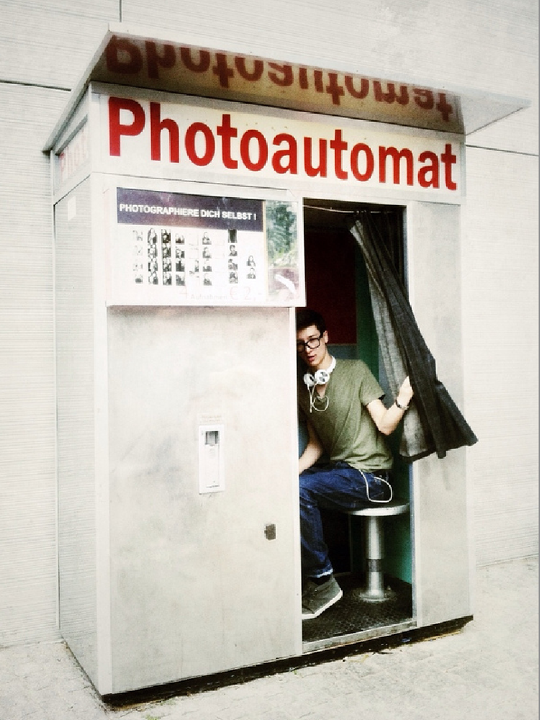
© Frederique Bellec, “Photoautomat”
(This is one of my favourite photos, which I took in Berlin. I was initially interested in the photobooth and as I snapped, this man happened to come out of the booth. This is street photography in its purest form in my opinion, when chance moments can be frozen to tell a story.)
Artistic goals and aspirations…
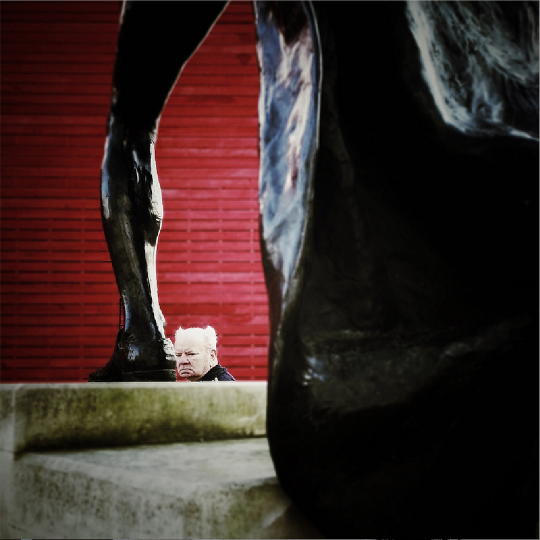
© Frederique Bellec, “Grumpy By Shed”
What are your artistic goals and aspirations?
I am at the start of my journey as a photographer. I am not sure where this journey will take me or how far, but I want to learn as much as I can about photography and shoot as much as possible – with my iPhone and with my big DSLR. Strangers on the street, buildings, architecture, music gigs, music bands, my friends, my family! I want to learn more about portraits, about lighting techniques. This is an exciting time for me. Photography unleashed my creativity – it all started with an iPhone and a fantastic mobile photography community.
So if you are interested to watch me grow as a photographer, check out my work on the following social media platforms:
Personal tips…
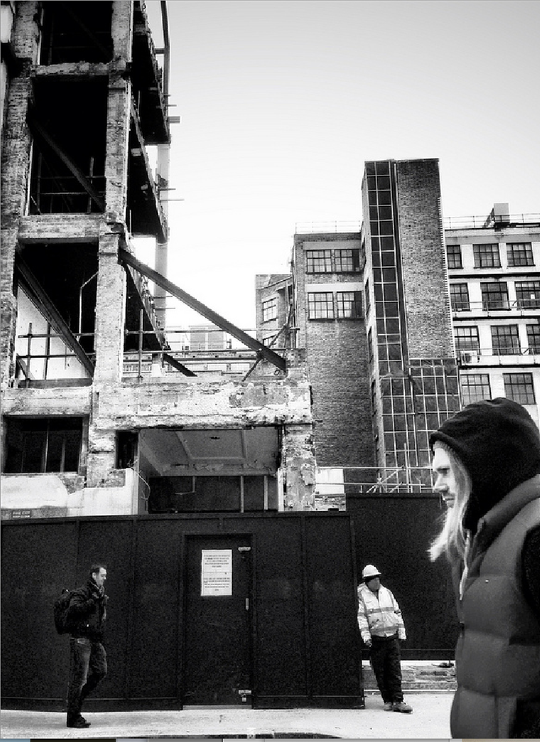
© Frederique Bellec, “Kurt Cobain Passing By”
Do you have any mobile street photography tips or tricks that you’d like to share with us?
My only advice would be to go out there and shoot a lot. Everyone needs to find their style and what works for them. Some photographers like to interact with their subject, some don’t. Try different techniques and meet up with other photographers. I find that I shoot differently when I am on a photo-walk with friends than when I am on my own. Enjoy the sharing and being part of this community. And never go anywhere without a camera (either mobile device or your camera) – Even if you think you’ve photographed that place too many times, without your camera, you might miss a great opportunity.
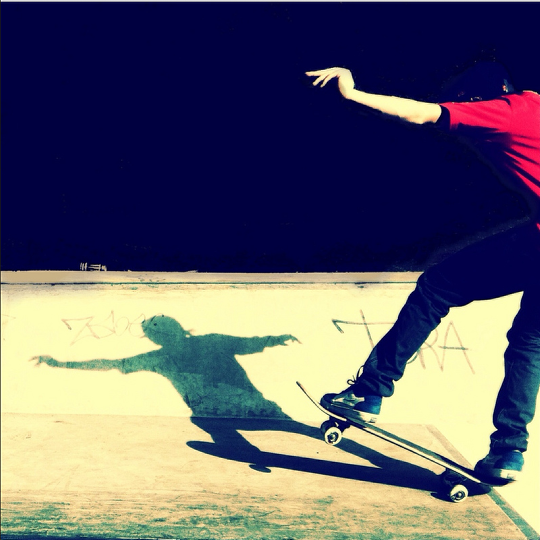
© Frederique Bellec, “Skateboarder”
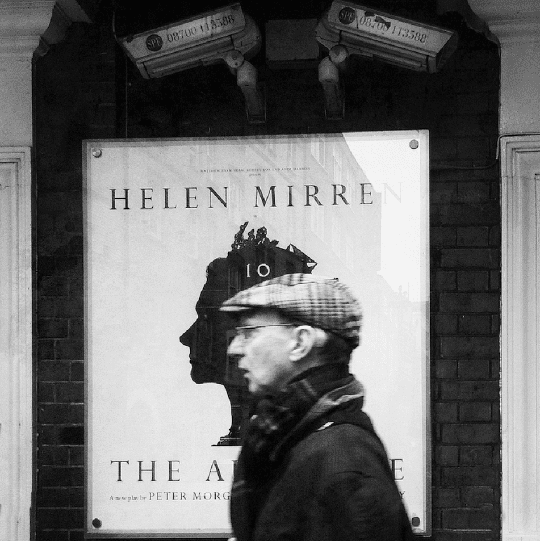
© Frederique Bellec, “Mirren”
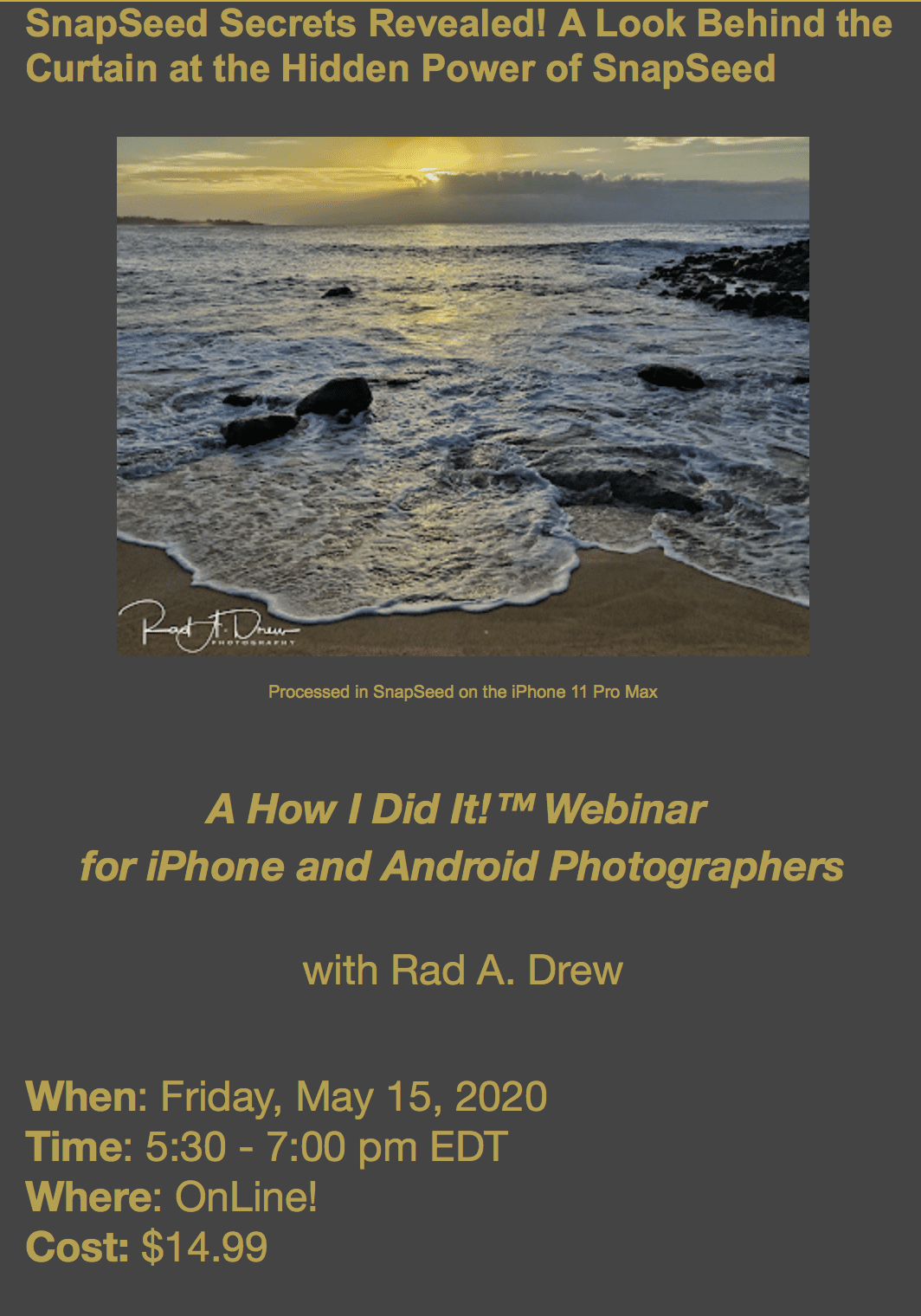
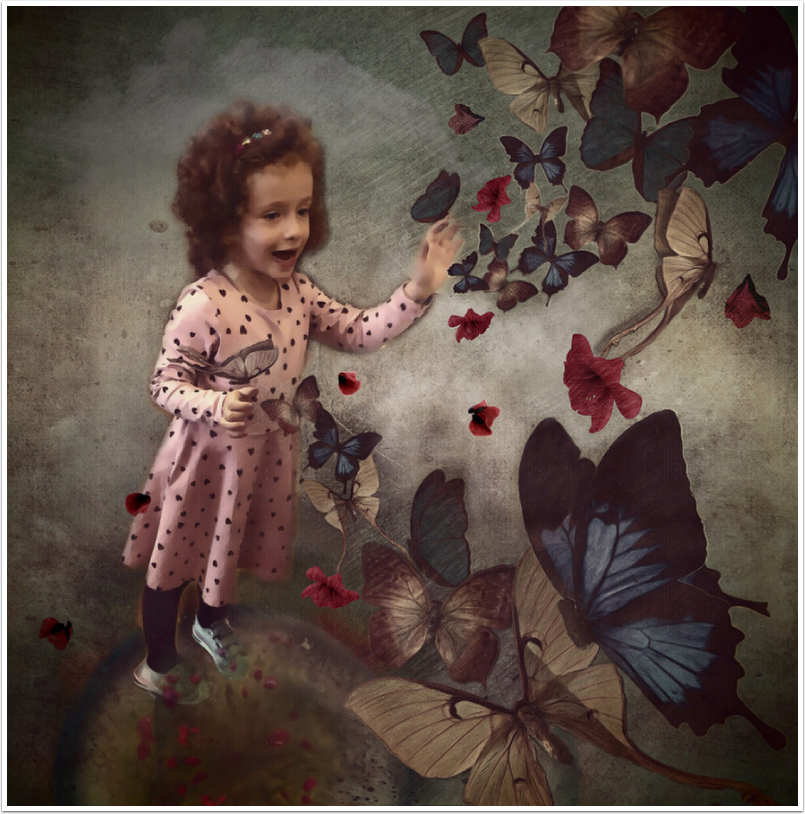
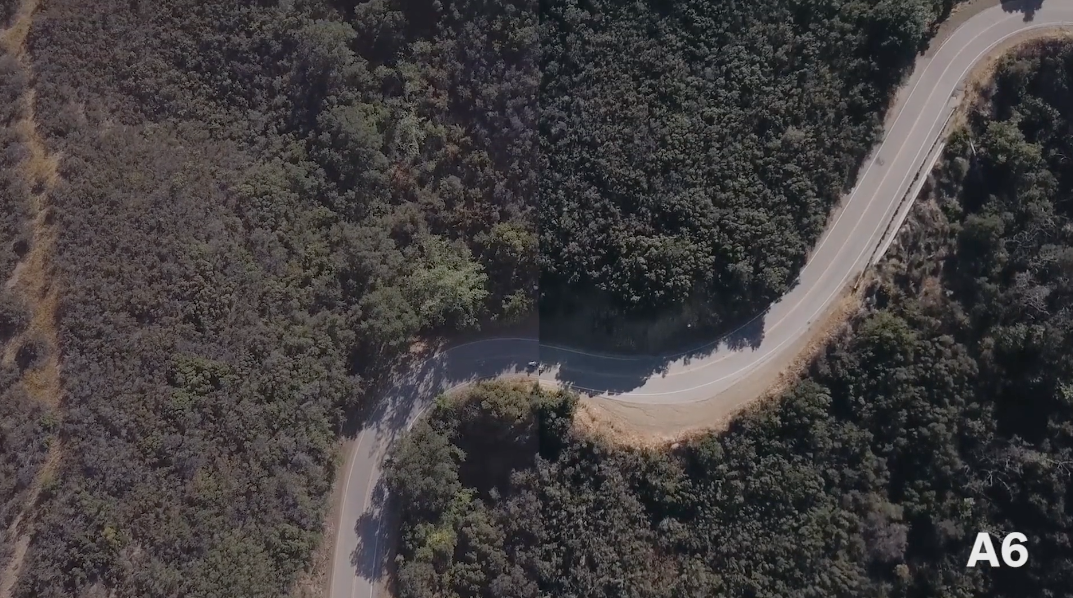
8 Comments
Beatdizzy
Beautiful images.
gina costa
Lovely interview! Thank you!
Cara Gallardo Weil
Great to read more about you Frederique!
Robert Lancaster
Great interview and fantastic images!
Thank you for sharing with us
Tracey Renehan
Excellent interview. Fantastic images, Frederique! I am very curious to see more of your work.
Tracy Mitchell Griggs
Super!
Lola Mitchell
Great photos! Great interview!
lee atwell
wonderful images, frederique! i enjoyed reading about you very much!